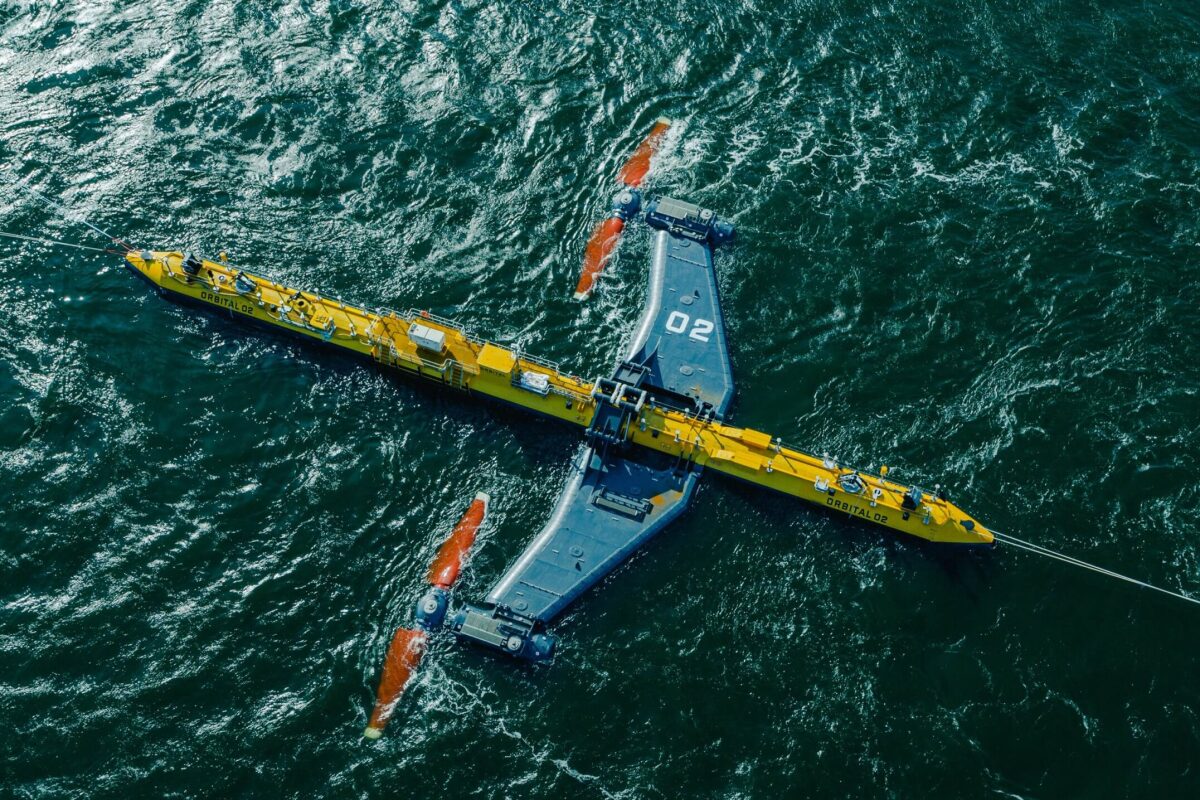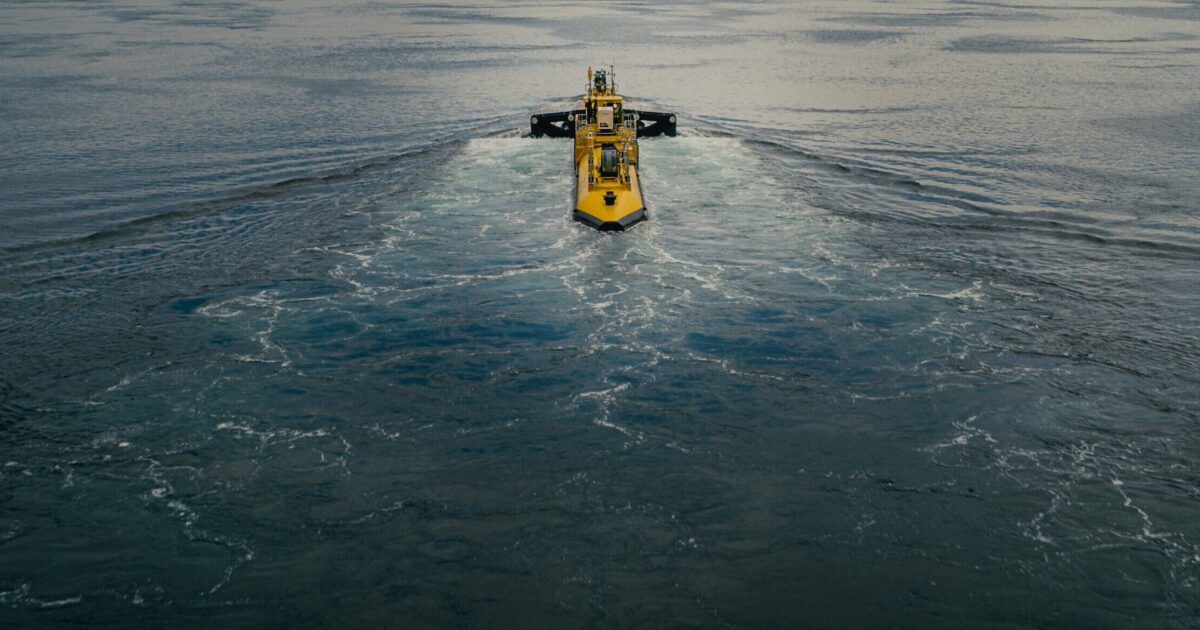Overview of the Orbital O2 Tidal Turbine
The Orbital O2, developed by Orbital Marine Power (formerly known as Scotrenewables Tidal Power Ltd), is a pioneering floating tidal energy device designed to generate renewable electricity from ocean currents. This turbine signifies over 15 years of research and development in the UK and stands as an important step towards enhancing the use of tidal power as part of the global shift to sustainable energy sources.
Specifications and Technology

The O2 turbine is approximately 74 meters (242 feet) long and consists of two 1 MW turbine nacelles located on either side of its hull, effectively giving it a total capacity of 2 MW. Each turbine features 10-meter (32-foot) blades that sweep over an area greater than 600 square meters. Its design incorporates advanced technologies such as 360-degree blade pitching control, allowing it to capture power efficiently from changing tidal currents without the need to rotate the entire platform. The O2’s mooring system holds it steady with significant anchoring capabilities, where each chain can support more than 50 double-decker buses[5][7].
Environmental Impact and Utility
The O2 is expected to serve the energy needs of around 2,000 UK homes annually and to reduce CO2 emissions by approximately 2,200 tonnes per year. It is positioned in the fast-moving waters of the Fall of Warness near Orkney, Scotland, where it has begun its operational life[3][7]. A significant part of its mission involves supplying power to an onshore electrolyser that generates green hydrogen, contributing to wider decarbonization efforts in energy production[3][5].
Development and Launch

Construction of the O2 took place in Dundee, Scotland, where it was manufactured by Texo Group, with various components sourced from UK suppliers. It was launched in April 2021 and towed to Orkney, where it was grid-connected in July 2021. Orbital's CEO, Andrew Scott, noted that this project marks a major milestone for the company and for tidal energy development, aiming to position Scotland as a leader in harnessing marine energy resources[3][7].
Comparison with Other Tidal Systems
While Orbital claims that the O2 is the 'world's most powerful operational tidal turbine,' it is important to qualify this statement. Other established tidal energy facilities, such as the Rance Tidal Power Station in France and the Sihwa Lake Tidal Power Plant in Korea, have turbines that individually generate significantly higher peak power outputs. For instance, the Rance station features turbines that peak at 10 MW, while those at Sihwa Lake can reach 25.4 MW. This suggests that the O2 may be the most powerful floating tidal turbine but not necessarily the most powerful overall[1][3].
Financial and Regulatory Support

The development of the O2 was largely supported by ethical investment platforms, the Scottish Government, and various EU funding programs, including the Horizon 2020 initiative. The Scottish Government has been particularly committed to promoting marine energy, providing around £3.4 million in support through the Saltire Tidal Energy Challenge Fund[3][7].
As the technology matures and scales up, Orbital is optimistic about reducing operational costs significantly, similar to the trends observed in wind and solar energy sectors. Future plans include deploying additional O2 turbines, with contracts awarded for further installations anticipated between 2026 and 2028. The company aims to expand its operations not just in Scotland but also internationally, seeking to establish a new low-carbon industrial sector around tidal energy[5][7].
Future Endeavors
Looking ahead, Orbital Marine Power plans to further commercialize its technology through multi-MW installations. In addition to strengthening their presence in UK waters, they are also exploring opportunities for a 30 MW array in the Westray Firth and a next-generation 2.4 MW O2X turbine in the Bay of Fundy, Canada. Such expansions are poised to reinforce the viability of tidal energy as a reliable source of renewable power[3][5][7].
The Orbital O2 not only represents a significant technological advancement in tidal energy but also embodies the potential for creating sustainable energy solutions that align with global goals for reducing carbon emissions and combating climate change.
Get more accurate answers with Super Pandi, upload files, personalized discovery feed, save searches and contribute to the PandiPedia.
Let's look at alternatives:
- Modify the query.
- Start a new thread.
- Remove sources (if manually added).